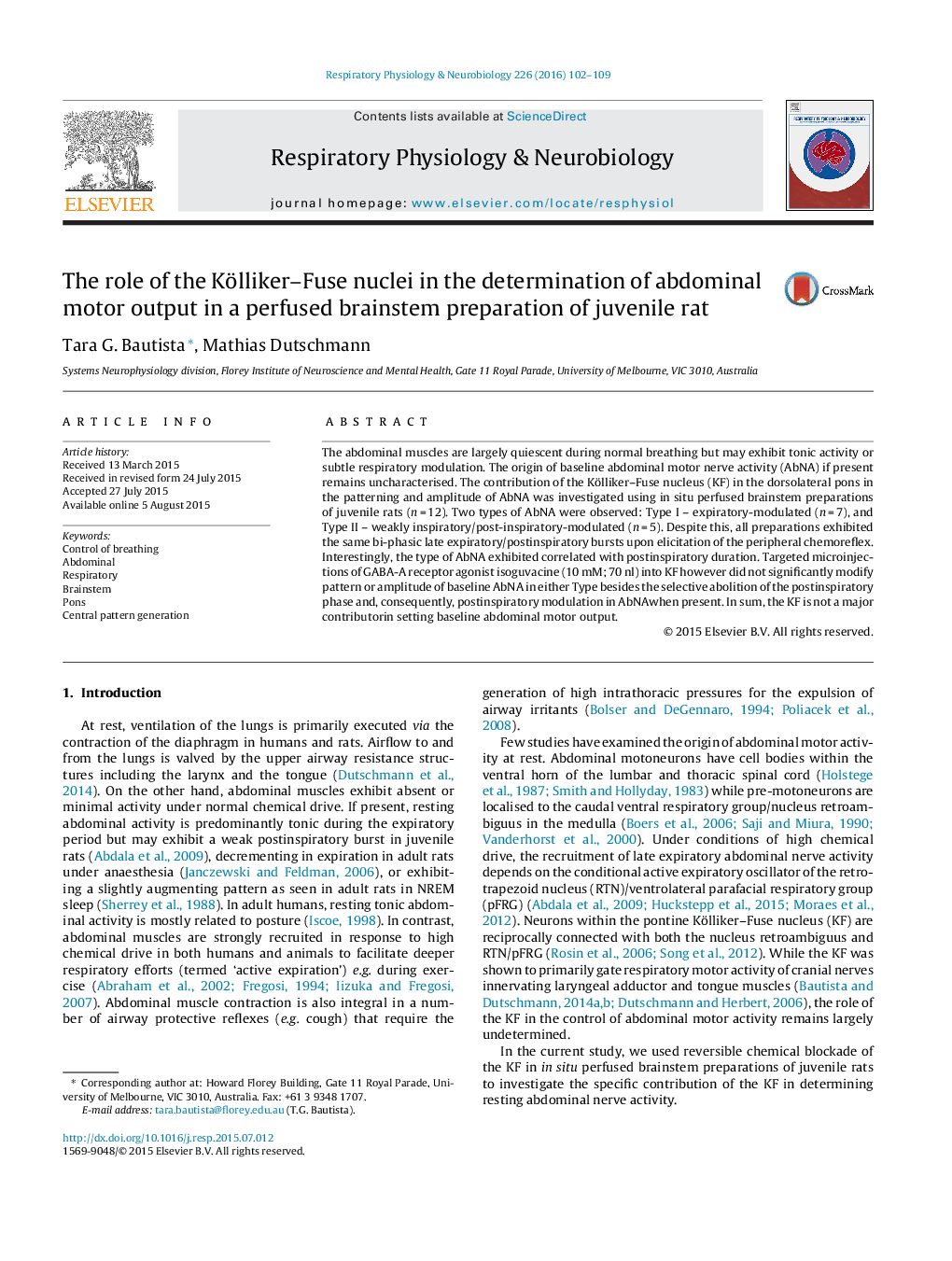| Article ID | Journal | Published Year | Pages | File Type |
|---|---|---|---|---|
| 2846721 | Respiratory Physiology & Neurobiology | 2016 | 8 Pages |
•Two types of respiratory-modulated abdominal nerve activity seen in juvenile rats.•Type of abdominal nerve activity exhibited correlates with postinspiratory duration.•Kölliker–Fuse nucleus inhibition does not alter baseline abdominal motor output.
The abdominal muscles are largely quiescent during normal breathing but may exhibit tonic activity or subtle respiratory modulation. The origin of baseline abdominal motor nerve activity (AbNA) if present remains uncharacterised. The contribution of the Kölliker–Fuse nucleus (KF) in the dorsolateral pons in the patterning and amplitude of AbNA was investigated using in situ perfused brainstem preparations of juvenile rats (n = 12). Two types of AbNA were observed: Type I – expiratory-modulated (n = 7), and Type II – weakly inspiratory/post-inspiratory-modulated (n = 5). Despite this, all preparations exhibited the same bi-phasic late expiratory/postinspiratory bursts upon elicitation of the peripheral chemoreflex. Interestingly, the type of AbNA exhibited correlated with postinspiratory duration. Targeted microinjections of GABA-A receptor agonist isoguvacine (10 mM; 70 nl) into KF however did not significantly modify pattern or amplitude of baseline AbNA in either Type besides the selective abolition of the postinspiratory phase and, consequently, postinspiratory modulation in AbNAwhen present. In sum, the KF is not a major contributorin setting baseline abdominal motor output.
